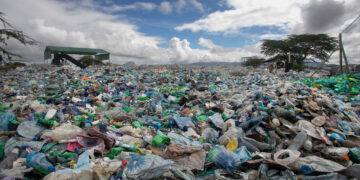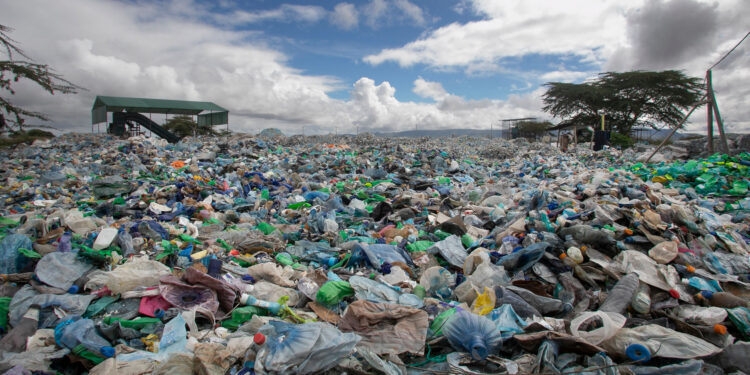Login to Continue Learning
As talks on a potential global treaty for addressing plastic waste approach, an environmental group has found that only a few U.S. states are taking significant steps to manage the plastic pollution that harms ocean wildlife and poses health risks.
Ocean Conservancy researchers evaluated state policies using 20 criteria related to plastic pollution, such as controls on single-use plastics, recycling rates, and efforts to control microplastic exposure. Only six states scored “good” or better in this analysis, with most needing improvement.
Marine scientists estimate that a garbage truck’s worth of plastic waste enters the world’s oceans every minute. Growing concerns include the human health impacts of microplastics and toxic chemicals found in some plastics.
The Ocean Conservancy’s report, titled “United States of Plastics,” revealed an average score of 1.5 out of five for states’ policies on plastic pollution. However, Anja Brandon, director of plastics policy at Ocean Conservancy, emphasized that the goal is not to shame lagging states but to highlight areas needing improvement and showcase those leading the way.
Several positive developments include:
– 14 states have banned single-use food containers made from expanded polystyrene (commonly known as “Styrofoam”).
– A dozen states have phased out single-use plastic bags.
– Recent growth in extended producer responsibility (EPR) policies, which hold producers accountable for the costs of managing their plastic packaging.
Brandon noted that these types of laws are effective. For instance, a study published in Science found that bans on plastic bags reduce them by 25% to 47%. These policies have started rolling out across the country.
Another promising trend is the adoption of EPRs, such as in Maryland and Washington this year, joining California, Colorado, Maine, Minnesota, and Oregon. EPR flips the system by making producers pay for the full life cycle of their products, incentivizing more recyclable and less wasteful packaging.
However, even progressive states like New York and California have faced challenges. New York legislators debated an EPR but fell short due to cost concerns from plastic producers. California’s landmark law on plastic pollution was also delayed when Governor Gavin Newsom rejected enforcement rules, seeking new ones that impose fewer costs.
The U.S. Plastic Pact and the Ellen MacArthur Foundation reports show many companies are likely to miss their 2025 targets despite progress in recycling materials and reducing virgin plastics use.
The Ocean Conservancy report comes as states face criticism for not doing enough to control plastic waste, with only six states scoring “good” or better on a 20-criteria assessment. The report highlights that while some states are taking action, most need improvement.
As talks on a global treaty on plastic waste resume in Geneva next month, the U.S., as the world’s top producer of plastic waste, will continue to rely on its states to implement changes. Regardless of what is negotiated globally, states must take the lead in addressing this issue.
Learn more about these efforts at Newsweek’s online event “Turning the Tide on Plastic Waste” on July 24, from your laptop or mobile device at 2 p.m. ET. Join us for insights into global plastics treaty negotiations and promising developments in reducing plastic pollution.
📚 Reading Comprehension Quiz
According to the Ocean Conservancy's report, how many U.S. states scored 'good' or better in their evaluation of state policies on plastic pollution?
Please login or register to take the quiz and earn points!



















